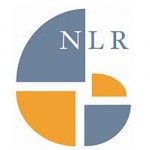Timsons, Molloys, & Collective Efficiency in Higher Education IT
It’s 2006, and we’re at Duke, for a meeting of the Common Solutions Group.

On the formal agenda, Paul Courant seeks to resurrect an old idea of Ira Fuch‘s, for a collective higher-education IT development-and-procurement entity provisionally called Educore.

 On the informal agenda, a bunch of us work behind the scenes trying to persuade two existing higher-education IT entities–Internet2 and National LambdaRail–that they would better serve their constituencies, which overlap but do not coincide, by consolidating into a single organization.
On the informal agenda, a bunch of us work behind the scenes trying to persuade two existing higher-education IT entities–Internet2 and National LambdaRail–that they would better serve their constituencies, which overlap but do not coincide, by consolidating into a single organization.
The merged organization would both lease capacity with some restrictions (the I2 model) and “own” it free and clear (the NLR model, the quotes because in many cases NLR owns 20-year “rights to use”–RTUs–rather than actual infrastructure.) The merged organization would find appropriate ways to serve the sometimes divergent interests of IT managers and IT researchers in higher education.

 Most everyone appears to agree that having two competing national networking organizations for higher education wastes scarce resources and constrains progress. But both NLR and Internet2 want to run the consolidated entity. Also, there are some personalities involved. Our work behind the scenes is mostly shuttle diplomacy involving successively more complex drafts of charter and bylaws for a merged networking entity.
Most everyone appears to agree that having two competing national networking organizations for higher education wastes scarce resources and constrains progress. But both NLR and Internet2 want to run the consolidated entity. Also, there are some personalities involved. Our work behind the scenes is mostly shuttle diplomacy involving successively more complex drafts of charter and bylaws for a merged networking entity.
Throughout the process I have a vague feeling of déjà vu.
![]()
 Partly I’m wistfully remembering the long and somewhat similar courtship between CAUSE and Educom, which eventually yielded today’s merged EDUCAUSE. I’m hoping that we’ll be able to achieve something similar for national higher-education networking.
Partly I’m wistfully remembering the long and somewhat similar courtship between CAUSE and Educom, which eventually yielded today’s merged EDUCAUSE. I’m hoping that we’ll be able to achieve something similar for national higher-education networking.
 And partly I’m remembering a counterexample, the demise of the American Association for Higher Education, which for years held its annual meeting at the Hilton adjacent to Grant Park in Chicago (almost always overlapping my birthday, for some reason). AAHE was an umbrella organization aimed comprehensively at leaders and middle managers throughout higher education, rather than at specific subgroups such as registrars, CFOs, admissions directors, housing managers, CIOs, and so forth. It also attracted higher-education researchers, which is how I started attending, since that’s what I was.
And partly I’m remembering a counterexample, the demise of the American Association for Higher Education, which for years held its annual meeting at the Hilton adjacent to Grant Park in Chicago (almost always overlapping my birthday, for some reason). AAHE was an umbrella organization aimed comprehensively at leaders and middle managers throughout higher education, rather than at specific subgroups such as registrars, CFOs, admissions directors, housing managers, CIOs, and so forth. It also attracted higher-education researchers, which is how I started attending, since that’s what I was.
AAHE collapsed, many think, because of the broad middle-management organization’s gradual splintering into a panoply of “caucuses” that eventually went their own ways, and to a certain extent its leaders aligning AAHE with too many faddish bandwagons. (To this day I wince when I hear the otherwise laudable word “assessment”.) It was also affected by the growing importance of discipline-specific organizations such as NACUBO, AACRAO, and NASPA–not to mention Educom and CAUSE–and it always vied for leadership attention with the so-called “presidential” organizations such as ACE, AAU, APLU, NAICU, and ACC.
![]() Together the split into caucuses and over-trendiness left AAHE with no viable general constituency or finances to continue its annual meetings, its support for Change magazine, or its other crosscutting efforts. AAHE shut down in 2005, and disappeared so thoroughly that it doesn’t even have a Wikipedia page; its only online organizational existence is at the Hoover Institution’s archives, which hold its papers.
Together the split into caucuses and over-trendiness left AAHE with no viable general constituency or finances to continue its annual meetings, its support for Change magazine, or its other crosscutting efforts. AAHE shut down in 2005, and disappeared so thoroughly that it doesn’t even have a Wikipedia page; its only online organizational existence is at the Hoover Institution’s archives, which hold its papers.
 At the Duke CSG meeting I’m hoping, as we work on I2 and NLR leaders to encourage convergence, that NLR v. I2 won’t turn out like AAHE, and that instead the two organizations will agree to a collaborative process leading to synergy and merger like that of CAUSE and Educom.
At the Duke CSG meeting I’m hoping, as we work on I2 and NLR leaders to encourage convergence, that NLR v. I2 won’t turn out like AAHE, and that instead the two organizations will agree to a collaborative process leading to synergy and merger like that of CAUSE and Educom.
We fail.
 Following the Duke CSG meeting, NLR and I2 continue to compete. They manage to collaborate briefly on a joint proposal for federal funding, a project called “U.S. UCAN“, but then that collaboration falls apart as NLR’s finances weaken. Internet2 commits to cover NLR’s share of U.S. UCAN, an unexpected burden. NLR hires a new CEO to turn things around; he leaves after less than a year. NLR looks to the private sector for funding, and finds some, but it’s not enough: its network shuts down abruptly in 2014.
Following the Duke CSG meeting, NLR and I2 continue to compete. They manage to collaborate briefly on a joint proposal for federal funding, a project called “U.S. UCAN“, but then that collaboration falls apart as NLR’s finances weaken. Internet2 commits to cover NLR’s share of U.S. UCAN, an unexpected burden. NLR hires a new CEO to turn things around; he leaves after less than a year. NLR looks to the private sector for funding, and finds some, but it’s not enough: its network shuts down abruptly in 2014.
In the event, Internet2 survives, especially by extending its mission beyond higher education, and by expanding its collective-procurement activities to include a diversity of third-party products and services under the Net+ umbrella. It also builds some cooperative ventures with EDUCAUSE, such as occasional joint conferences and a few advocacy efforts.
![]() Meanwhile, despite some false starts and missed opportunities, the EDUCAUSE merger succeeds. The organization grows and modernizes. It tackles a broad array of services to and advocacy on behalf of higher-education IT interests, organizations, and staff.
Meanwhile, despite some false starts and missed opportunities, the EDUCAUSE merger succeeds. The organization grows and modernizes. It tackles a broad array of services to and advocacy on behalf of higher-education IT interests, organizations, and staff.
But now I’m having a vague feeling of déjà vu all over again. As was the case for I2/NLR, I sense, there’s little to be gained and some to be lost from Internet2 and EDUCAUSE continuing as separate organizations.
![]() Partly the issue is simple organizational management efficiency: in these times of tight resources for colleges, universities, and state systems, does higher education IT really need two financial staffs, two membership-service desks, two marketing/communications groups, two senior leadership teams, two Boards, and for that matter two CEOs? (Throw ACUTA, Unizin, Apereo, and other entities into the mix, and the question becomes even more pressing.)
Partly the issue is simple organizational management efficiency: in these times of tight resources for colleges, universities, and state systems, does higher education IT really need two financial staffs, two membership-service desks, two marketing/communications groups, two senior leadership teams, two Boards, and for that matter two CEOs? (Throw ACUTA, Unizin, Apereo, and other entities into the mix, and the question becomes even more pressing.)
 But partly the issue is deeper. EDUCAUSE and Internet2 are beginning to compete with one another for scarce resources in subtle ways: dues and memberships, certainly, but also member allegiance, outside funding, and national roles. That competition, if it grows, seems perilous. More worrisome still, some of the competition is of the non-salutary I’m OK/You’re Not OK variety, whereby each organization thinks the other should be subservient.
But partly the issue is deeper. EDUCAUSE and Internet2 are beginning to compete with one another for scarce resources in subtle ways: dues and memberships, certainly, but also member allegiance, outside funding, and national roles. That competition, if it grows, seems perilous. More worrisome still, some of the competition is of the non-salutary I’m OK/You’re Not OK variety, whereby each organization thinks the other should be subservient.
 We don’t quite have a Timson/Molloy situation, I’m glad to say. But with little productive interaction at the organizations’ senior levels to build effective, equitable collaboration, there’s unnecessary risk that competitive tensions will evolve into feudal isolation.
We don’t quite have a Timson/Molloy situation, I’m glad to say. But with little productive interaction at the organizations’ senior levels to build effective, equitable collaboration, there’s unnecessary risk that competitive tensions will evolve into feudal isolation.
If EDUCAUSE and Internet2 can work together on the basis of mutual respect, then we can minimize that risk, and maybe even move toward a success like CAUSE/Educom becoming EDUCAUSE. If they can’t–well, if they can’t, then I think about AAHE, and NLR’s high-and-dry stakeholders, and I worry.
